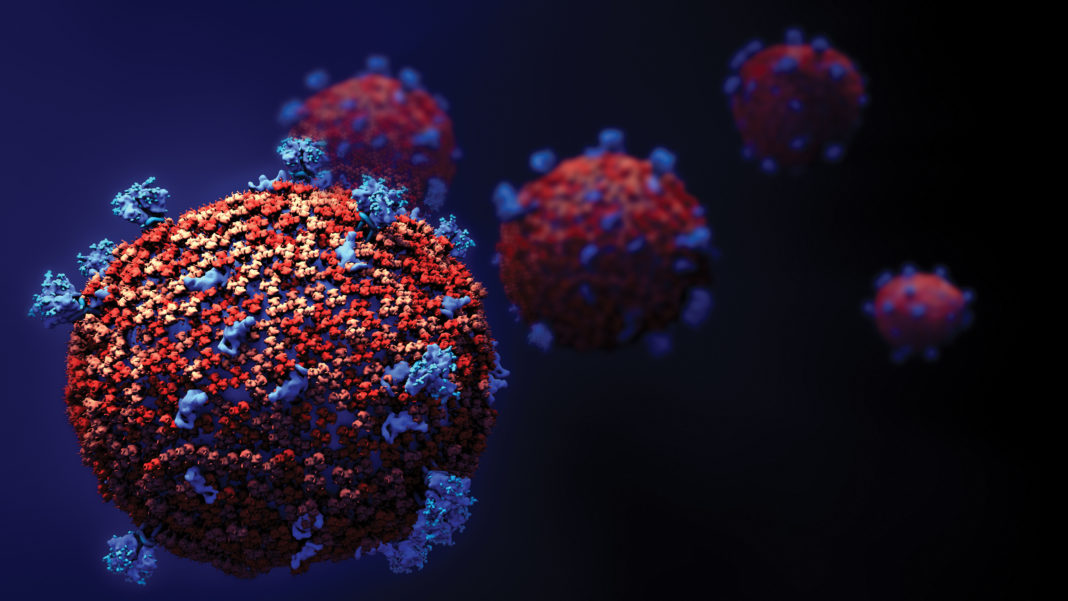Huge leaps have been made, especially over the past few years, in understanding how coronaviruses wreak havoc on our cells. However, the mechanism that SARS-CoV-2 uses to create such negative, long-term, effects on cells—compared with other coronaviruses—has remained elusive.
Now, a multi-institutional consortium of researchers led by a team at Children’s Hospital of Philadelphia (CHOP) and the COVID-19 International Research Team (COV-IRT) points to the mitochondria, with findings suggesting that the genes of the mitochondria can be negatively impacted by the virus, leading to dysfunction in multiple organs beyond the lungs.
These findings, published in Science Translational Medicine in the paper, “Core mitochondrial genes are downregulated during SARS-CoV-2 infection of mammalian hosts” suggest new approaches for treating COVID-19.
To understand how SARS-CoV-2 impacts mitochondria, researchers from the Center for Mitochondrial and Epigenomic Medicine (CMEM) at CHOP along with their COV-IRT colleagues analyzed mitochondrial gene expression to detect differences caused by SARS-CoV-2. To do this, they analyzed a combination of nasopharyngeal and autopsy tissues from affected patients and animal models. Previous studies have shown that SARS-CoV-2 proteins can bind to mitochondrial proteins in host cells, potentially leading to mitochondrial dysfunction—likely through the inhibition of oxidative phosphorylation and stimulating glycolysis.
“The tissue samples from human patients allowed us to look at how mitochondrial gene expression was affected at the onset and end of disease progression, while animal models allowed us to fill in the blanks and look at the progression of gene expression differences over time,” said Joseph Guarnieri, PhD, a postdoctoral research fellow with the CMEM at CHOP.
The study found that, in nasopharyngeal samples, the virus “blocked the transcription of a subset of nuclear DNA–encoded mitochondrial OXPHOS genes, induced the expression of microRNA 2392, activated HIF-1α to induce glycolysis, and activated host immune defenses including the integrated stress response.”
In autopsy tissue, mitochondrial gene expression had recovered in the lungs, but mitochondrial function remained suppressed in the heart as well as the kidneys and liver.
When studying animal models and measuring the time when the viral load was at its peak in the lungs, mitochondrial gene expression was suppressed in the cerebellum even though no SARS-CoV-2 was observed in the brain. Additional animal models revealed that during the mid-phase of SARS-CoV-2 infection, mitochondrial function in the lungs was beginning to recover.
Taken together, these results reveal that host cells respond to initial infection in a way that involves the lungs, but over time, mitochondrial function in the lungs is restored, while in other organs, particularly the heart, mitochondrial function remains impaired.
“This study provides us with strong evidence that we need to stop looking at COVID-19 as strictly an upper respiratory disease and start viewing it as a systemic disorder that impacts multiple organs,” said Douglas C. Wallace, PhD, director of the CMEM at CHOP. “The continued dysfunction we observed in organs other than the lungs suggests that mitochondrial dysfunction could be causing long-term damage to the internal organs of these patients.”
In addition, the researchers found a potential therapeutic target in microRNA 2392 (miR-2392), which was shown to regulate mitochondrial function in human tissue samples used in this study.
“This microRNA was upregulated in the blood of patients infected by SARS-CoV-2, which is not something we normally would expect to see,” said Afshin Beheshti, PhD, a biostatistician, a visiting researcher at The Broad Institute, and founder and president of COV-IRT. “Neutralizing this microRNA might be able to impede the replication of the virus, providing an additional therapeutic option for patients who are at risk for more serious complications related to the disease.”
According to Wallace, the demonstration that SARS-CoV-2 markedly affects mitochondrial function supports the hypothesis that individual differences in mitochondrial function could be a factor in individual severity of COVID-19.



